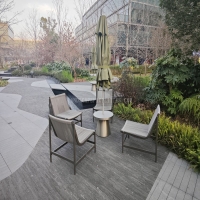Welcome to the website for landscape facilities products and knowledge.
How do landscape tables perform in terms of resistance to graffiti removal chemicals?
Landscape tables, commonly used in public parks, campuses, and urban spaces, are designed to endure harsh environmental conditions—including vandalism like graffiti. Their resistance to graffiti removal chemicals depends on material composition and surface treatments.
Most high-quality landscape tables are crafted from materials like powder-coated steel, polyethylene, or concrete, which inherently resist chemical corrosion. Powder-coated finishes, for instance, create a non-porous barrier, preventing graffiti paint from penetrating and allowing easier cleaning with solvents. Polyethylene tables, meanwhile, are naturally resistant to harsh chemicals, making graffiti removal straightforward without damaging the surface.
Concrete tables often feature sealants that repel paint and enable pressure washing or chemical cleaning. However, repeated use of strong solvents may degrade untreated surfaces over time. For optimal longevity, manufacturers recommend using mild, non-abrasive cleaners specifically formulated for outdoor furniture.
In summary, landscape tables perform well against graffiti removal chemicals when constructed with durable, treated materials. Regular maintenance and proper cleaning techniques further enhance their vandal-resistant properties, ensuring long-term aesthetic and functional value.
Related search:

Recommendation
Metal structure rattan chair without armrests for single person, with woven seat and backrest.